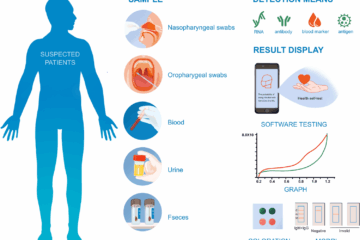
America spends more on healthcare per capita than any other country in world. In 2015, the US devoted 17% of the gross domestic product, more than $3 trillion, to health expenditures. 17% of the GDP is approximately twice the average health cost of the OECD countries.
Unfortunately this unsurpassed spending has not made the US number one in health. When compared to the 35 OECD countries, the US ranks 26th in maternal mortality, 27th in life expectancy and 29th in low birth weight.
How can we pay so much more and get so much less?
To answer this question we must ask another. What are the determinants of health?
The literature identifies five major categories: genetics, behavior, social circumstances, environment/physical influences, and health (medical) care. No surprises here. However the relative impact of these categories is anything but common knowledge.
Extensive research indicates that approximately 60% of health is determined by social, environmental and behavioral factors, 20% by genetics and 20% by health care. The validity of this breakdown can be appreciated by observing health outcomes in countries where spending is targeted accordingly.
You can’t pick your parents and we have not yet mastered technology to change our genes. So for now, that 20% of health determined by genetics cannot be addressed beyond very basic counseling. The 60% defined by social, environmental and behavioral factors is the domain of social services. This includes such interventions as supportive housing, employment programs and nutritional support.
A ranking of OECD countries by the ratio of social service to health care spending presents a very different picture than total spending alone. The US comes in first in health expenditures as a percent of GDP and last when comparing the ratio of social service to health care spending. In the US, for every $1 spent on health care, about $0.90 is spent on social services. In the OECD countries, for every $1 spent on health care, approximately $2 is spent on social services.
Countries with higher ratios of social-to-health spending have better health. This is very clearly illustrated by lower infant mortality, fewer low birth weight babies, less premature death and longer life expectancy. The same effect can be seen when comparing states within the US. Higher ratios are associated with lower rates of asthma and obesity and lower mortality among individuals with lung cancer, heart attacks and diabetes.
This story carries both good and bad news. The bad news is that we have it all wrong when it comes to funding health. The good news is that we may not need to spend more money. We must spend it differently.
Dr. Moran, in a 2015 Society of General Internal Medicine presidential speech, demonstrated a variety of ways funds could be reallocated by presenting some eye-opening opportunity costs. One ER visit pays one month’s rent. 20 MRIs pays a social worker for a year. 60 echocardiograms provide a public school teacher’s salary for one year.
How do we change a culture in which half the adults have one or more preventable diet or activity-related chronic diseases? The direct medical cost of obesity alone (38% of adult population are obese) now totals $190 billion annually. The answer appears to be spending less on health-care and more on the social determinants of health.
[SOURCE:-Huffington Post]




